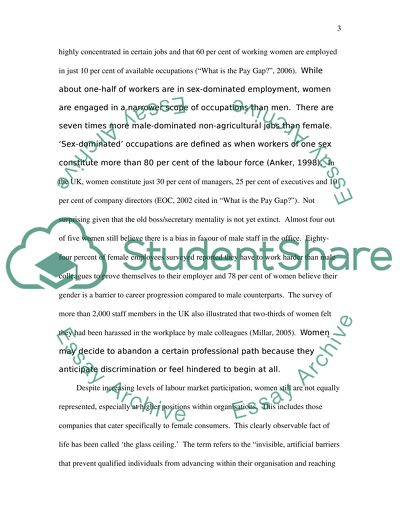Cite this document
(Working Time as Gendered Time Essay Example | Topics and Well Written Essays - 1500 words, n.d.)
Working Time as Gendered Time Essay Example | Topics and Well Written Essays - 1500 words. https://studentshare.org/gender-sexual-studies/1540224-most-feminists-believe-that-the-position-of-women-in-the-labour-market-is-an-important-source-of-disadvantage
Working Time as Gendered Time Essay Example | Topics and Well Written Essays - 1500 words. https://studentshare.org/gender-sexual-studies/1540224-most-feminists-believe-that-the-position-of-women-in-the-labour-market-is-an-important-source-of-disadvantage
(Working Time As Gendered Time Essay Example | Topics and Well Written Essays - 1500 Words)
Working Time As Gendered Time Essay Example | Topics and Well Written Essays - 1500 Words. https://studentshare.org/gender-sexual-studies/1540224-most-feminists-believe-that-the-position-of-women-in-the-labour-market-is-an-important-source-of-disadvantage.
Working Time As Gendered Time Essay Example | Topics and Well Written Essays - 1500 Words. https://studentshare.org/gender-sexual-studies/1540224-most-feminists-believe-that-the-position-of-women-in-the-labour-market-is-an-important-source-of-disadvantage.
“Working Time As Gendered Time Essay Example | Topics and Well Written Essays - 1500 Words”. https://studentshare.org/gender-sexual-studies/1540224-most-feminists-believe-that-the-position-of-women-in-the-labour-market-is-an-important-source-of-disadvantage.


